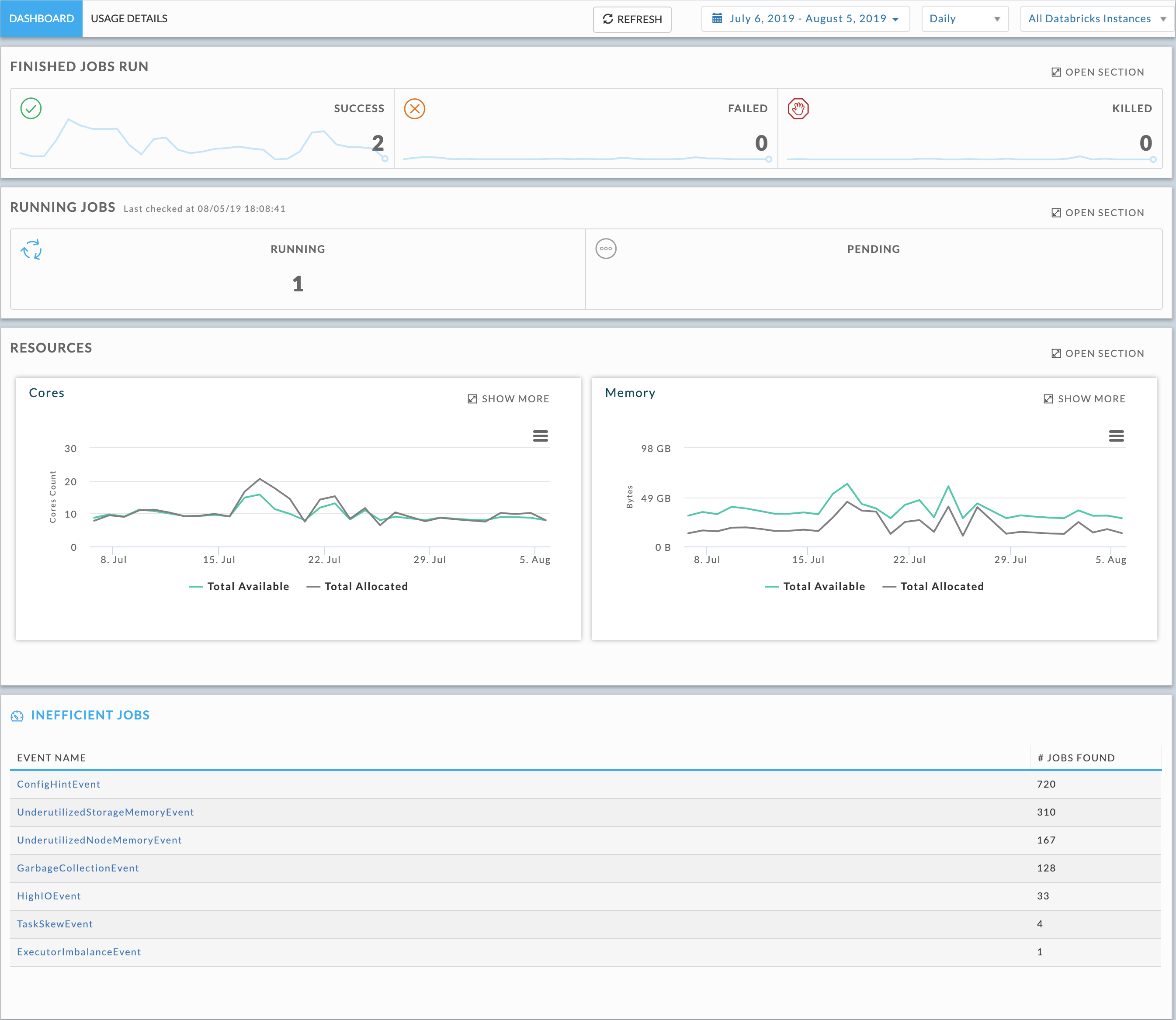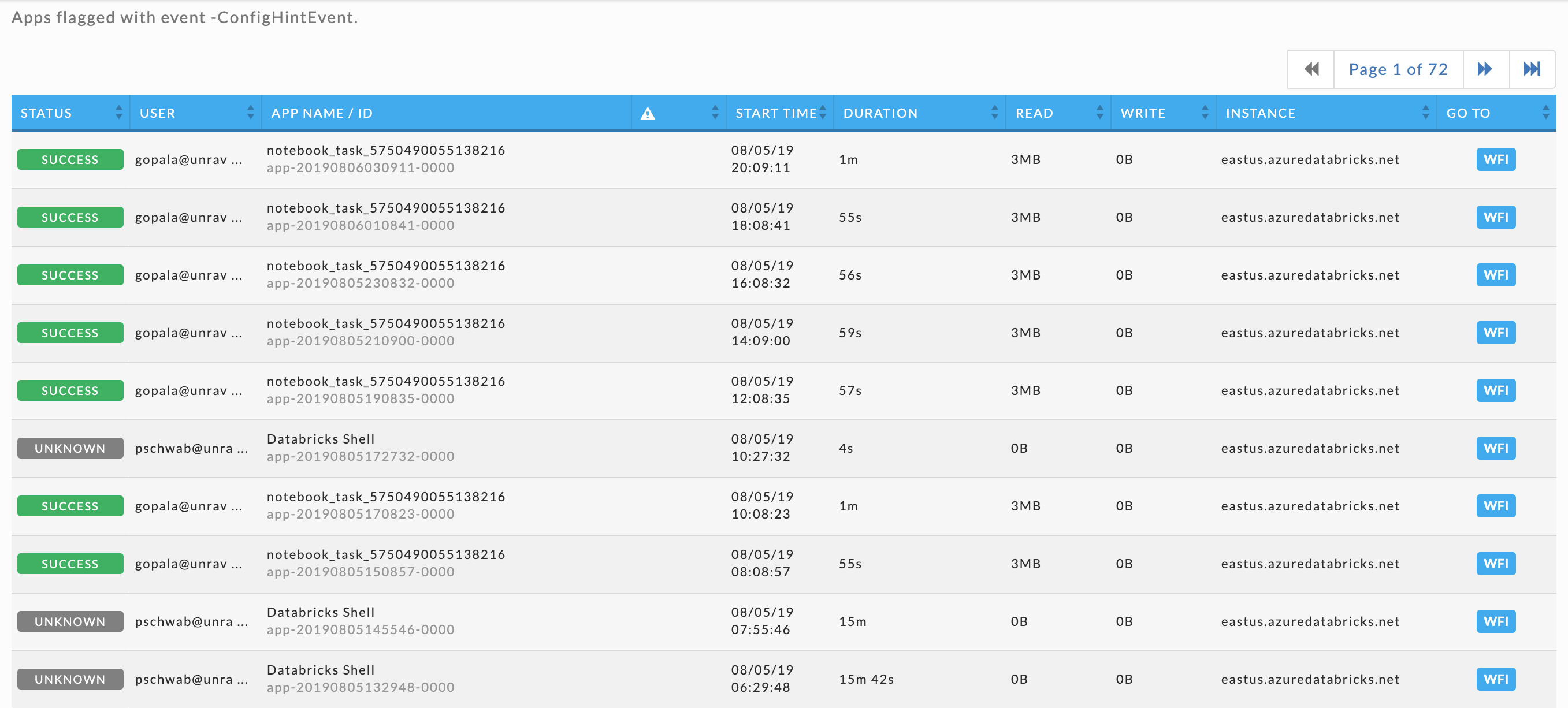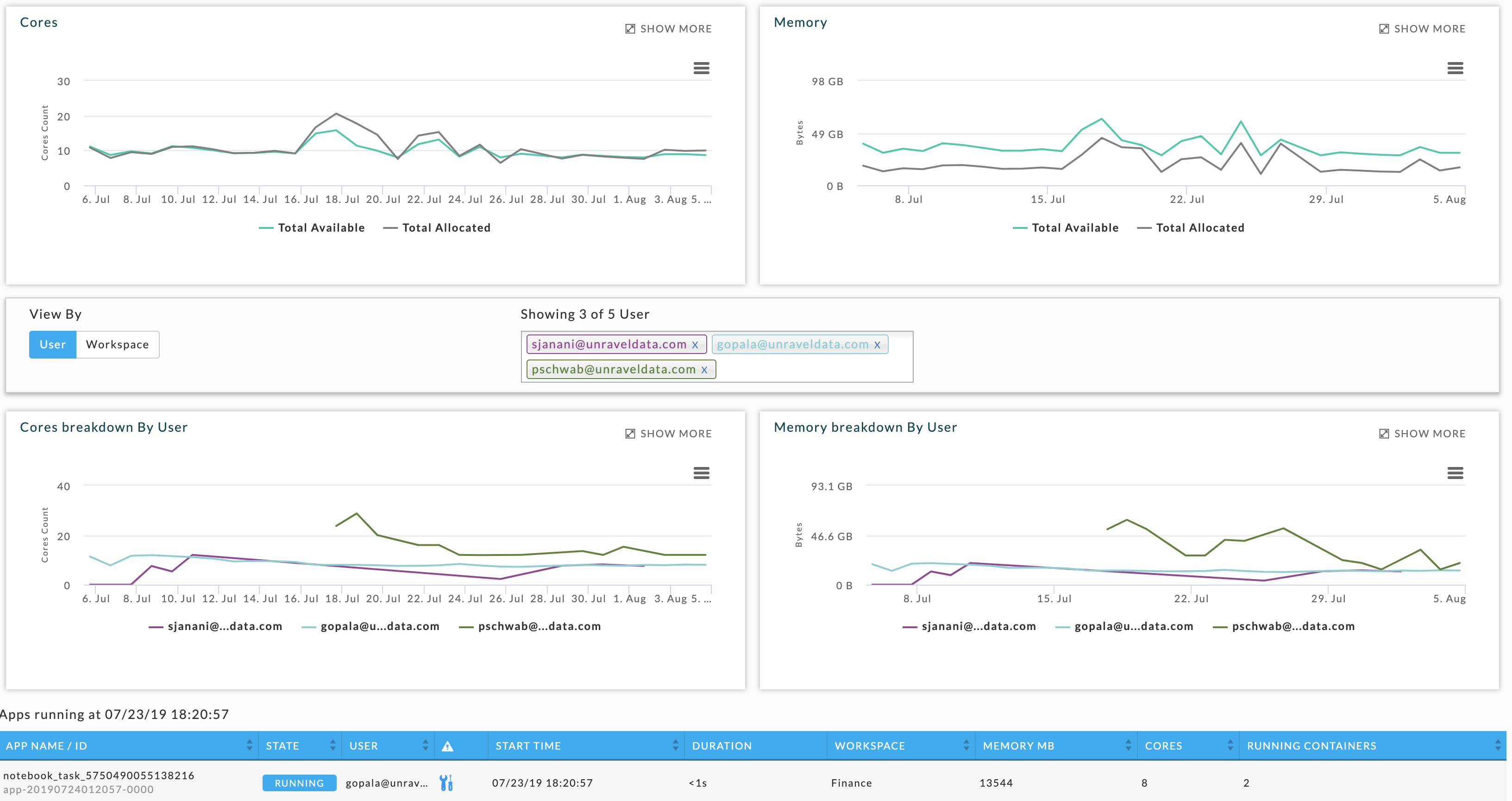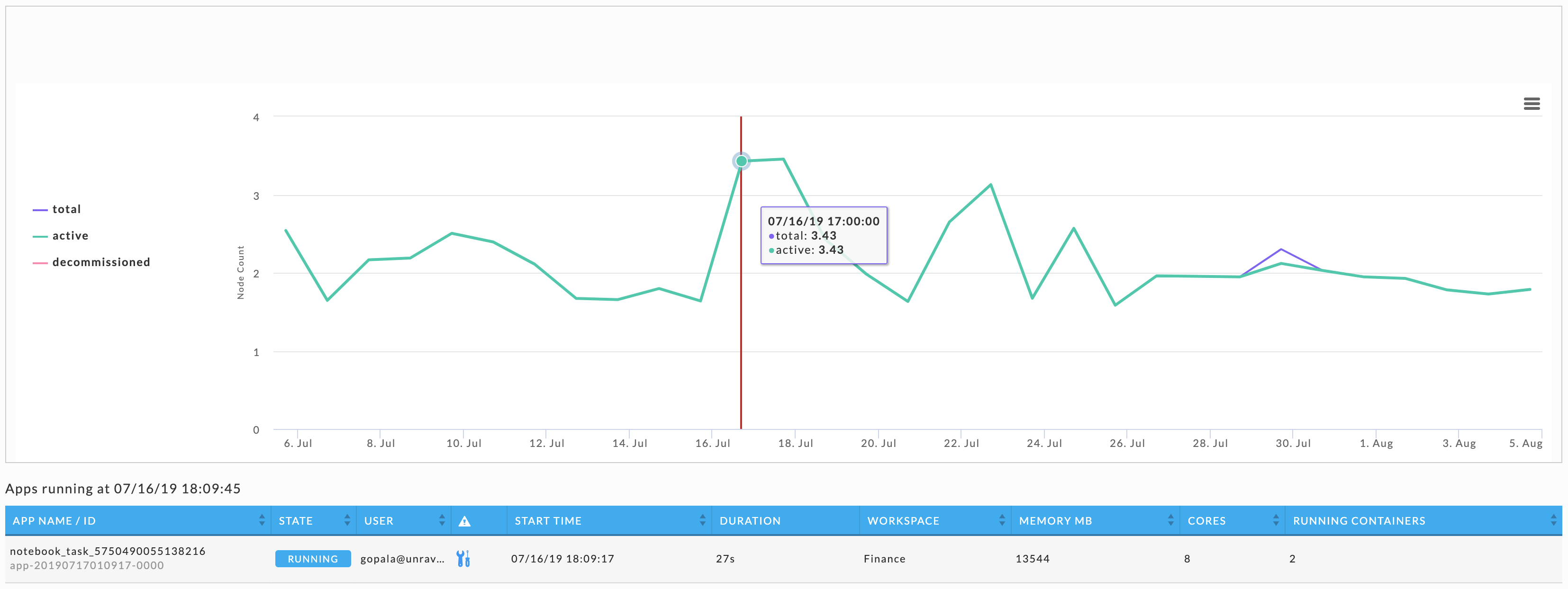Operations page
(Azure Databricks)
The Operations Page provides a synopsis of your cluster(s) and its activities. It has two tabs:
Dashboard
Usage Details
By default, it opens showing Operations > Dashboard tab.

Note
See Common UI Features or general information and common features about Unravel's UI.
Dashboard
To view the Dashboard, click Operations > Dashboard.
The Dashboard provides an overview of cluster activities with links to drill down into the Job runs, resource usage, application inefficiencies, and events/alerts. By default, it is configured to display all clusters hourly for the past 24 hours. When you interact with the page, for example, click a graph, Unravel stops refreshing the page. Click refresh  to start Unravel refreshing the page.
to start Unravel refreshing the page.

Finished jobs tile
The line graphs display the successful, failed, and killed jobs for the time period, using the time increment and instance(s) specified. It textually displays the total number over the time period.

Clicking on Open Section brings up an application window listing all apps. See Applications (cloud).
Running jobs tile
The line graphs display the running and pending jobs for the current time. It textually displays the total number at the current time period.

Resources tile
Displays the Core and Memory. Clicking on  opens Operations > Usage Details > Infrastructure tab.
opens Operations > Usage Details > Infrastructure tab.

Inefficient jobs
Lists events that your runs have had. The Event Name is the type of event which has occurred, the # Jobs Found is the number of jobs which have experienced the event.

Click on an event to bring up a list of apps that have experienced it. The event type is noted in the upper left-hand corner. The app list is equivalent to Applications > Applications (cloud) except it only displays runs that have experienced the event.

Usage details

Usage Detail has two tabs:
Infrastructure
Nodes
 Unravel can pinpoint apps causing a sudden a spike in core or memory usage. This lets you easily drill down into these apps in order to understand their behavior. Whenever possible, Unravel provides recommendations and insights to help improve an app's run.
Unravel can pinpoint apps causing a sudden a spike in core or memory usage. This lets you easily drill down into these apps in order to understand their behavior. Whenever possible, Unravel provides recommendations and insights to help improve an app's run.
All the charts and tables are automatically refreshed; however refreshing is disabled when you interact within a page to alter its display, for example, change the date range or click a point within a graph. When disabled, a  button appears in Usage Details title bar. Click it to resume automatic refreshes.
button appears in Usage Details title bar. Click it to resume automatic refreshes.

By default, the tab opens showing the Infrastructure tab.
For all charts, click the menu bars ( ), print and download options, for example, CSV, JPEG. Click Show More to expand it. For a particular point in time, hover over chart to see a tool tip with details. Click a graph to see all apps running at that particular point in time.
), print and download options, for example, CSV, JPEG. Click Show More to expand it. For a particular point in time, hover over chart to see a tool tip with details. Click a graph to see all apps running at that particular point in time.
Infrastructure
This tab contains four graphs.
The upper two list available and allocated Cores and Memory.
The bottom two shows the Cores and Memory by User or Workspace.
Clicking within a chart displays the apps running for that point in time.

For bottom two graphs, click User or Workspace to change the view. You can further filter the graph by specific users or workspaces. Click the text box above to the graphs to see the options. Click an option to select it. Once selected, click the x next to the option to deselect it. In the prior example three users were selected; below two workspaces were selected.

Nodes
Graphs the total, active, and decommissioned nodes. Click within the graph to see what apps were running at that point in time.
